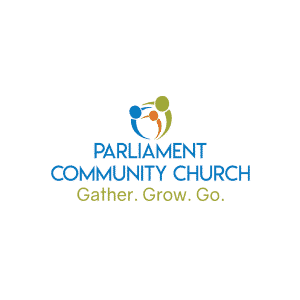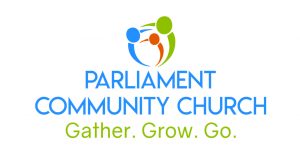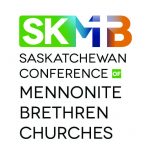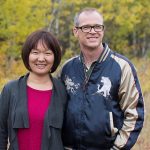PCC: The first 50 years (1943 – 1992)
The families who moved to Regina worshiped together with the German Baptists at their church on Victoria Avenue, but the individuals of Mennonite Brethren (MB) heritage kept in contact with other MB families in southern Saskatchewan, particularly through the Herbert Mennonite Brethren Church. During the Second World War, young men who wished to be registered as conscientious objectors did so by affiliating with the Herbert church.
In late 1941, a group of fifteen people attending the German Baptist church but identifying with Mennonite Brethren denomination met and decided to contact Regina city authorities regarding the construction of a church building. The plan was to dismantle a building on 19th Avenue and transport the lumber to 2226 MacKay Street. The permit was granted, and in Spring 1942, construction began. The small church was built entirely with volunteer labour. July 1942 records show a membership of 27 adults at the Regina Mennonite Brethren Church, which existed as an affiliate of the Herbert Mennonite Brethren Church. Services in the MacKay Street church were conducted in German, although a transition to English began soon after opening as the church worked with the Open Door Sunday School. Baptisms were conducted in nearby Wascana lake, with the entire congregation walking to the lake for that part of the service.
During the fourteen years following the founding of the Mennonite Brethren Church at 2226 MacKay Street, General Conference Mennonites and Mennonite Brethren worshiped together. An arrangement was made for ministers from both conferences to serve the church, and ministers from various Saskatchewan centres travelled to Regina between 1948 and 1955. When in 1955 the General Conference members left to form their own fellowship (presently the Grace Mennonite Church), the Regina MB church became an independent church, and at that time, George Braun was called to be the first pastor of the church.
For eighteen years the small church building on MacKay Street served the congregation well, but there was no room for expansion, which was particularly needed for Christian education purposes. A building committee was elected in November 1959, and in 1961 a new church building on Hill Avenue was complete and ready to serve members and the community in south Regina. Now all the services except for one adult Sunday School Class were in the English language. The church grew in numbers and programs offered. The new facility included a baptismal tank, a library and a kitchen. When children’s and youth programs outgrew the available rooms in the Hill Avenue building, classes used space in the Seventh Day Adventist Church, conveniently located across the street. Records show that in 1971 the average attendance at a Sunday morning worship service was 114.
After fourteen years at the Hill Avenue location, it became evident that more spacious facilities would assist the church in achieving their goals. In anticipation of possible future developments, property in south Regina had been purchased in 1974. After studying designs and assessing the finances needed for a new building, the committee recommended relocating to 4011 Pasqua street, and the Hill Avenue building was sold to The Christian Reformed Church. On February 8, 1976 Parliament Community Church opened its doors for the first worship service. Why ‘Parliament Community” as the name of the new church? It certainly was not because of proximity to the hill in Ottawa, but rather because of the property’s location in a subdivision named Parliament Place and the church’s location near the intersection of Pasqua Street and Parliament Avenue. The inclusion of the word “community” was a way of affirming the commitment to be welcoming and of service to the surrounding neighbourhood. At the time of the dedication of the building in May 1976, a Leader Post article declared, “Parliament Community Church is a handsome edifice, and the sanctuary, although no cathedral, has a devotional quality about its proportions which indicate to the visitor the perspective of those responsible for the design of the whole impressive unit. The accent is undoubtedly on service to the community in offering Christian facilities intended to be both inspirational and functional.”
Almost exactly seven years later in May 1983, the church again had a dedication – this time of expanded facilities that included more space for Christian education and a raised stage in the sanctuary. The brochure distributed at this dedication service contained the motto “The Church That Cares for You and Your Family,” and it listed programs for children, youth, college and career as well as information on home Bible studies and the Sunday morning and evening services.
In 1992, fifty years after the origin of the MacKay Street church, the average attendance at Parliament Community Church on Sunday morning was approximately 250. In May of 1992 a decision was made to construct an addition to existing facilities, including a new entrance, a second floor in the south wing, an enlarged foyer, extra classrooms, a new kitchen and more storage space.
Hallmarks of the church throughout the first 50 years, according to information taken primarily from the writings of former pastors, include care for those in the church and community; hospitality; generosity – particularly toward missions giving; and above all, a focus on carrying out the teachings of God’s word under the leadership of many strong, dedicated and forward-looking men and women.
Lead Pastors 1955 – 1992:
- · George Braun 1955 – 1958
- · Helmut Klassen 1956 – 1960
- · George Dyck 1960 – 1967
- · Roy Martens, interim 1967-1968
- · Peter Teigrob 1968 – 1979
- · Don Balzer 1970 – 1972
- · Paul Unger 1972 – 1979
- · Norm Neufeld 1979 – 1987
- · (no lead Pastor 1987 – 1989)
- · Harry Strauss 1989 – 1997
- Associate Pastors 1982 – 1992: Jack Mulholland, Allan Camponi, Bernie Loewen, Jim Somerville
About Menu
Upcoming Events
-
ESL Ministry Class
Sunday May. 5
9:30 am- 10:30 am -
Adult Discipleship Class
Sunday May. 5
9:30 am- 10:30 am -
Worship Celebration
Sunday May. 5
10:45 am- 12:00 pm
Elders Information
Next Elders Meeting
Nothing from Fri May 3 to Sat Aug 3.
Elders Updates
read previous Elders meeting highlights here




